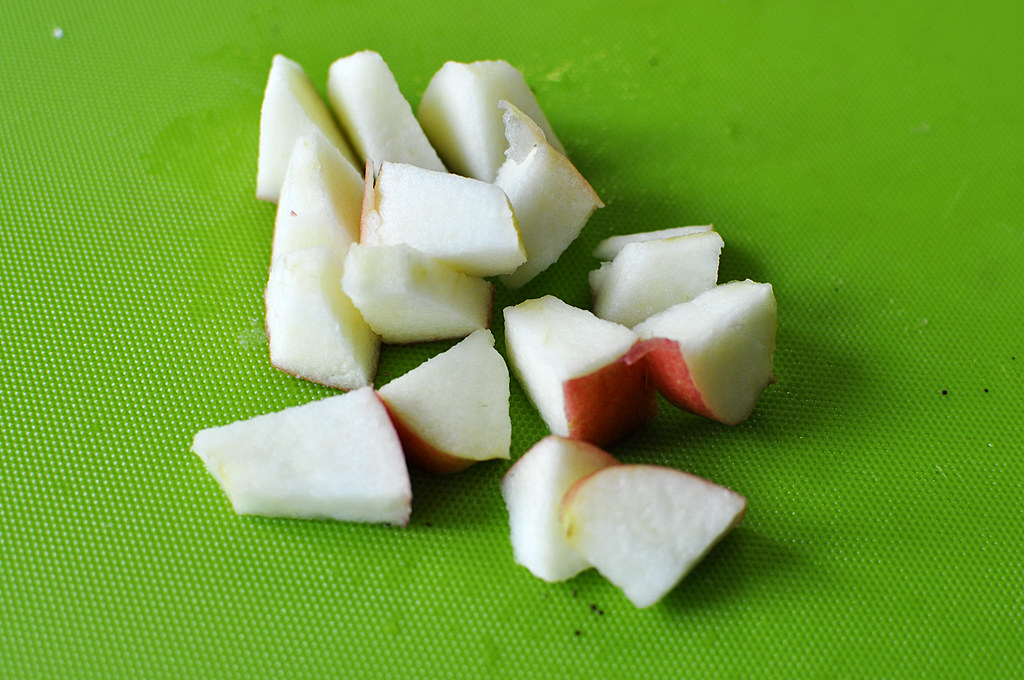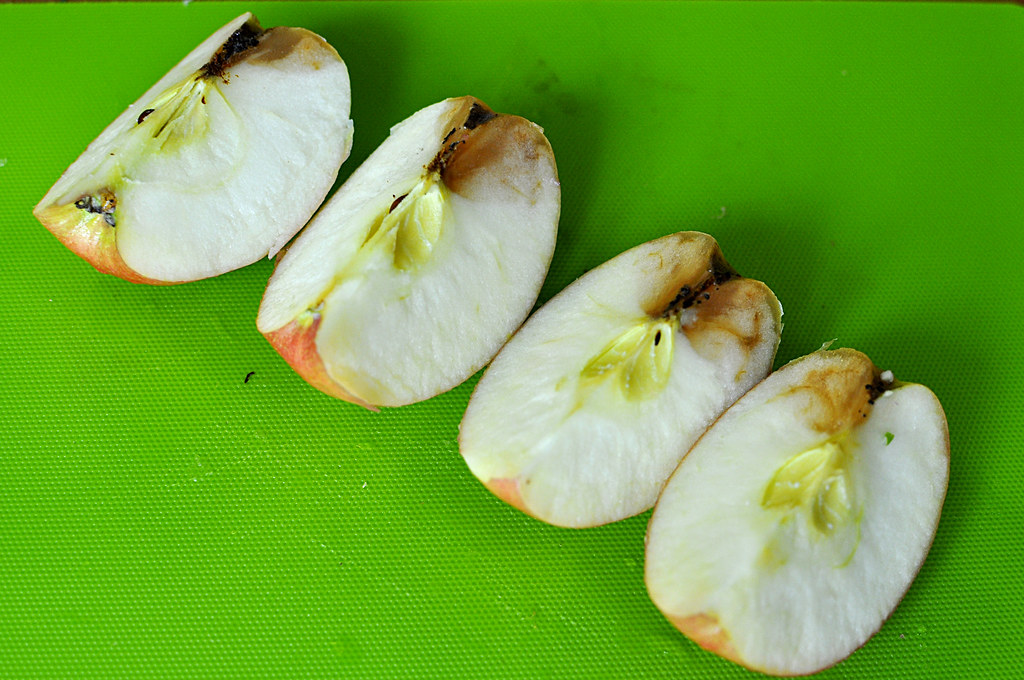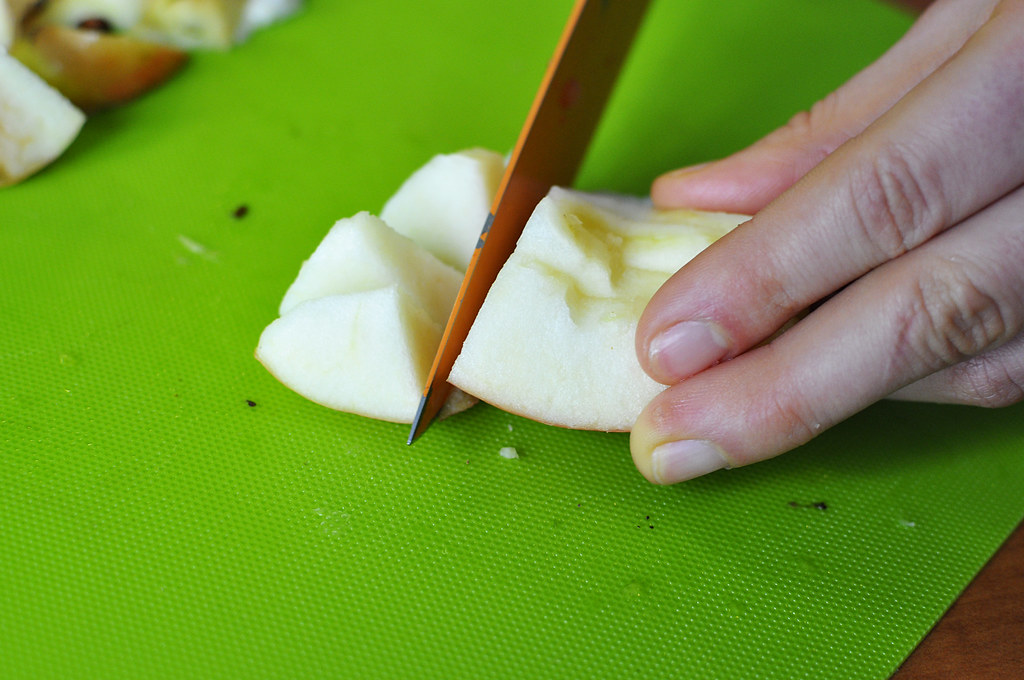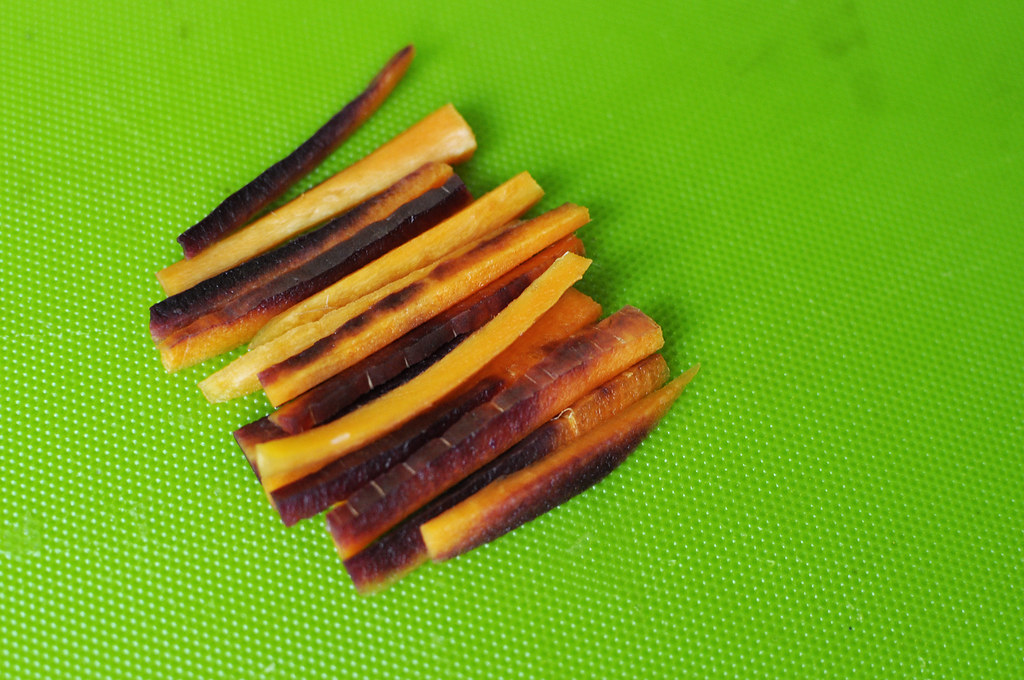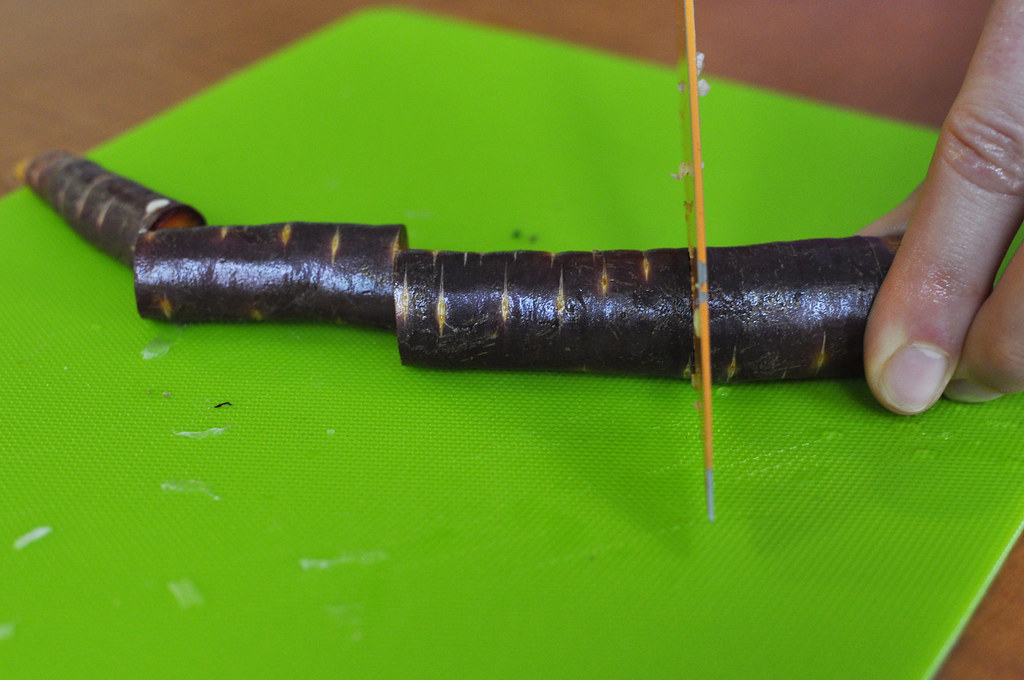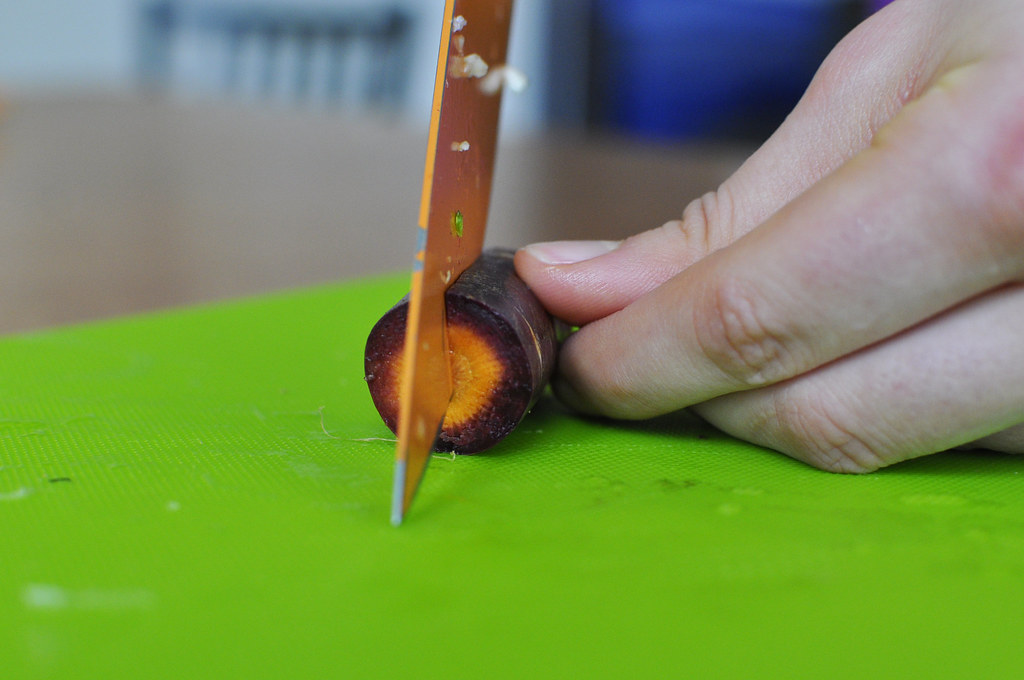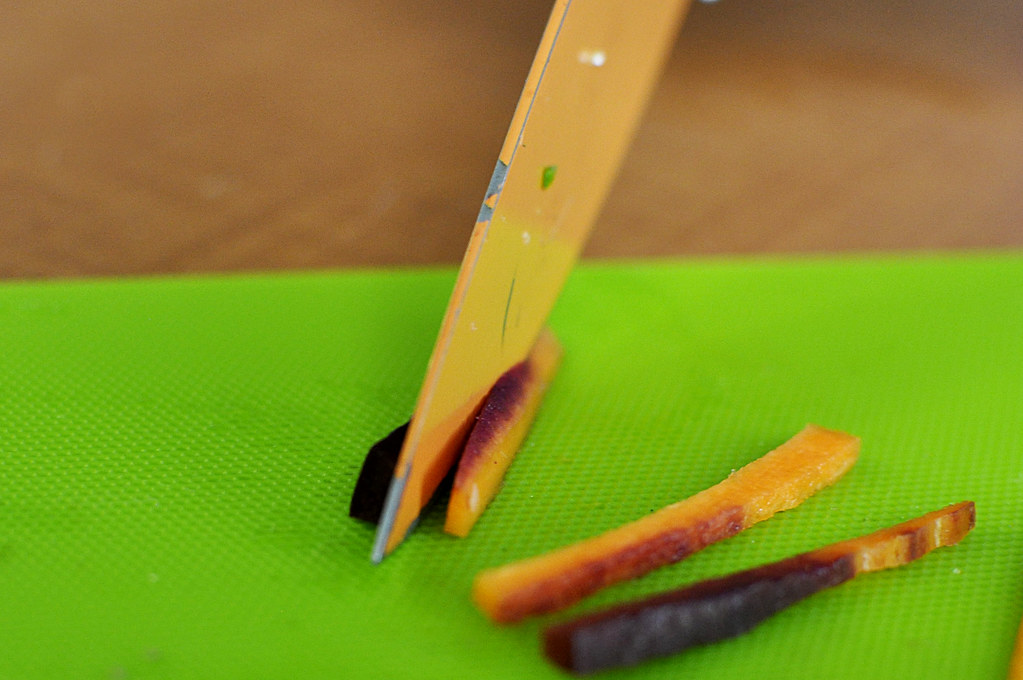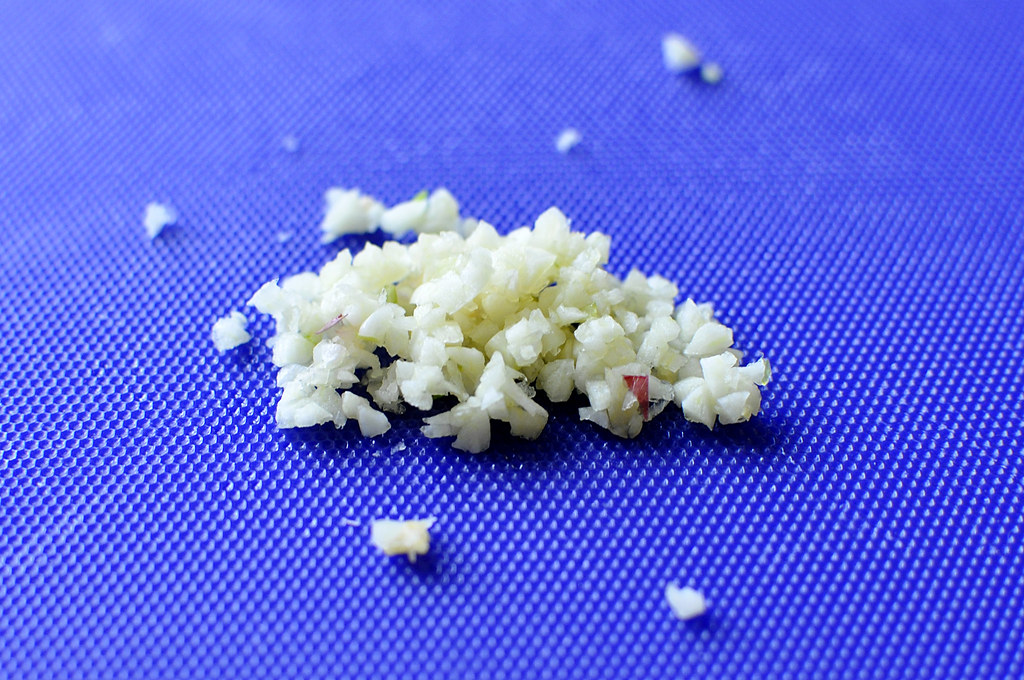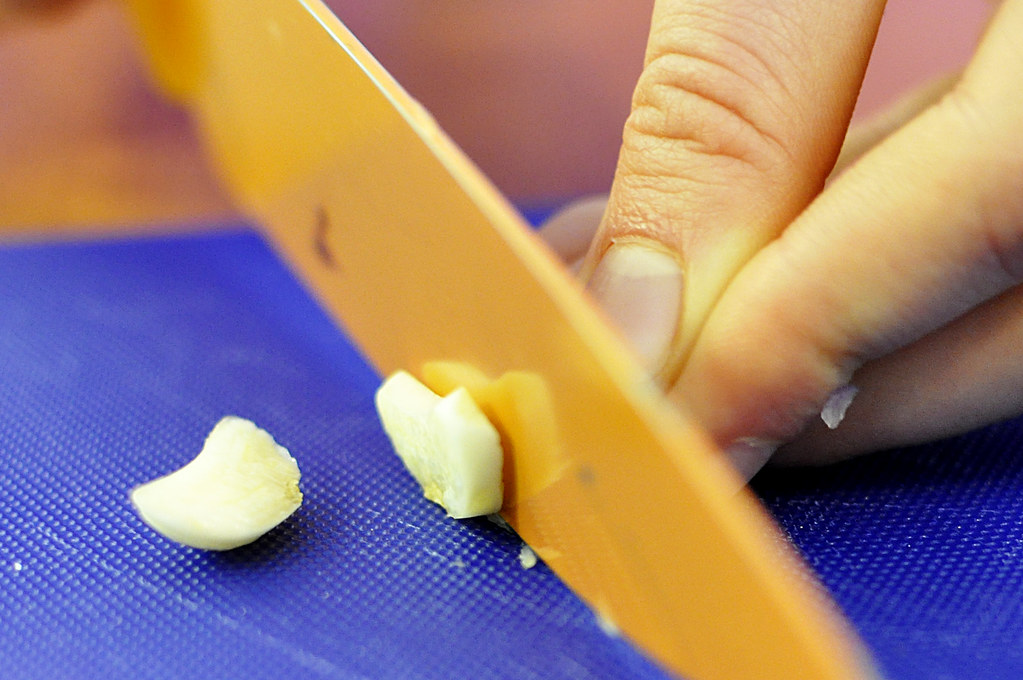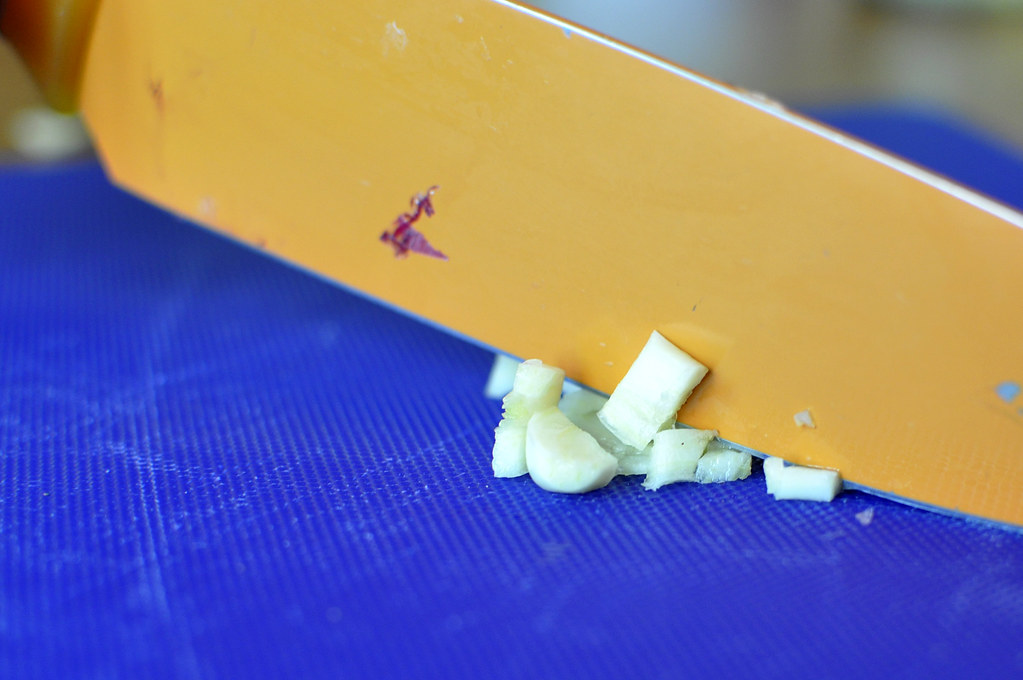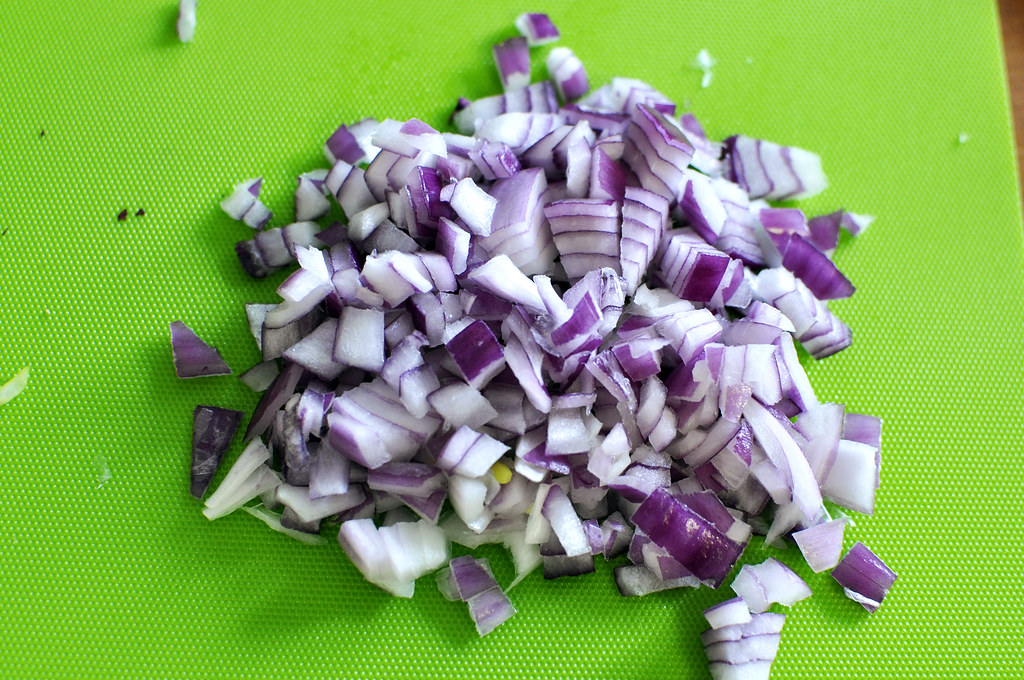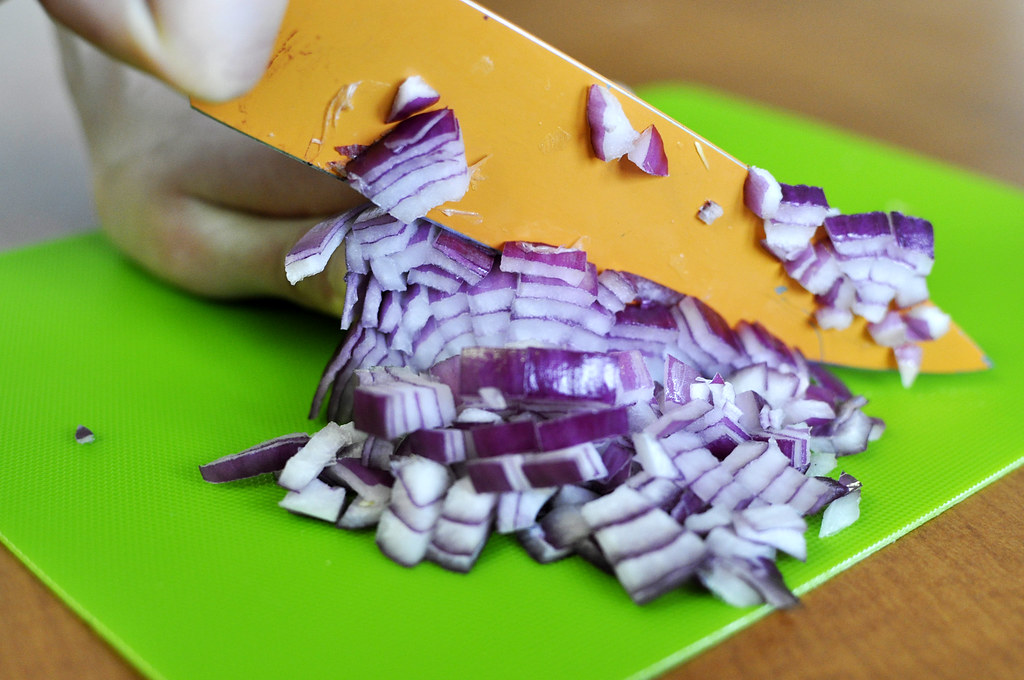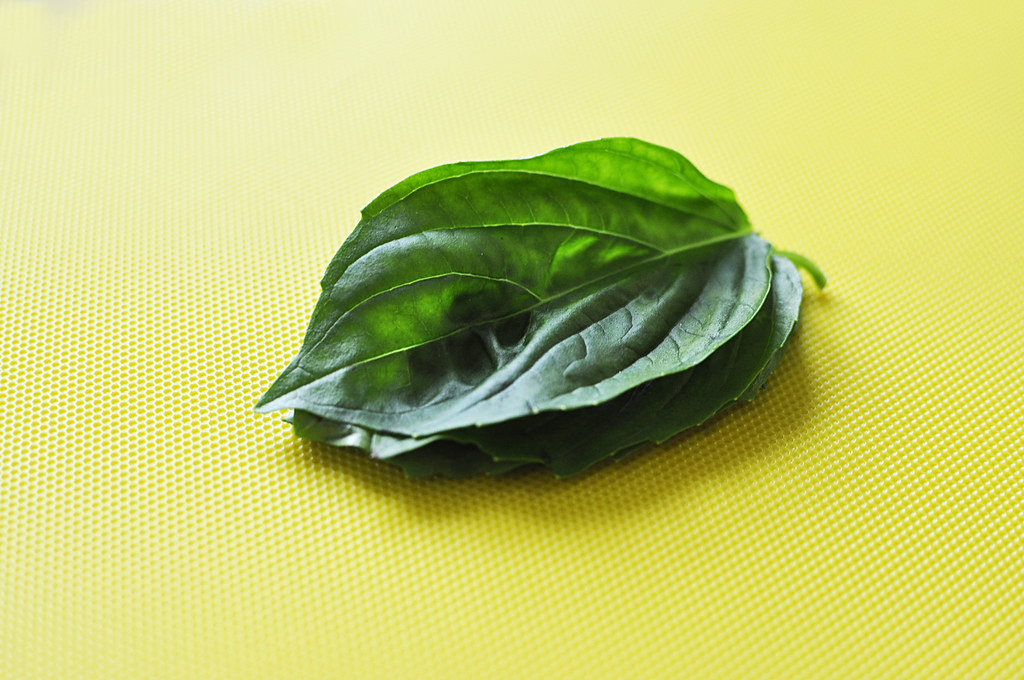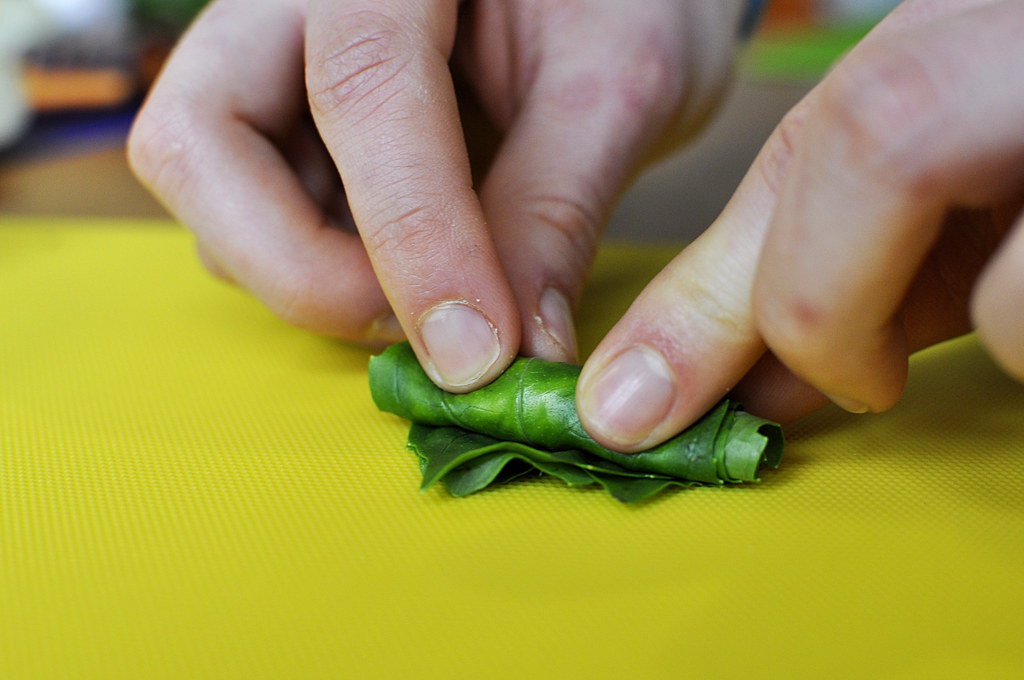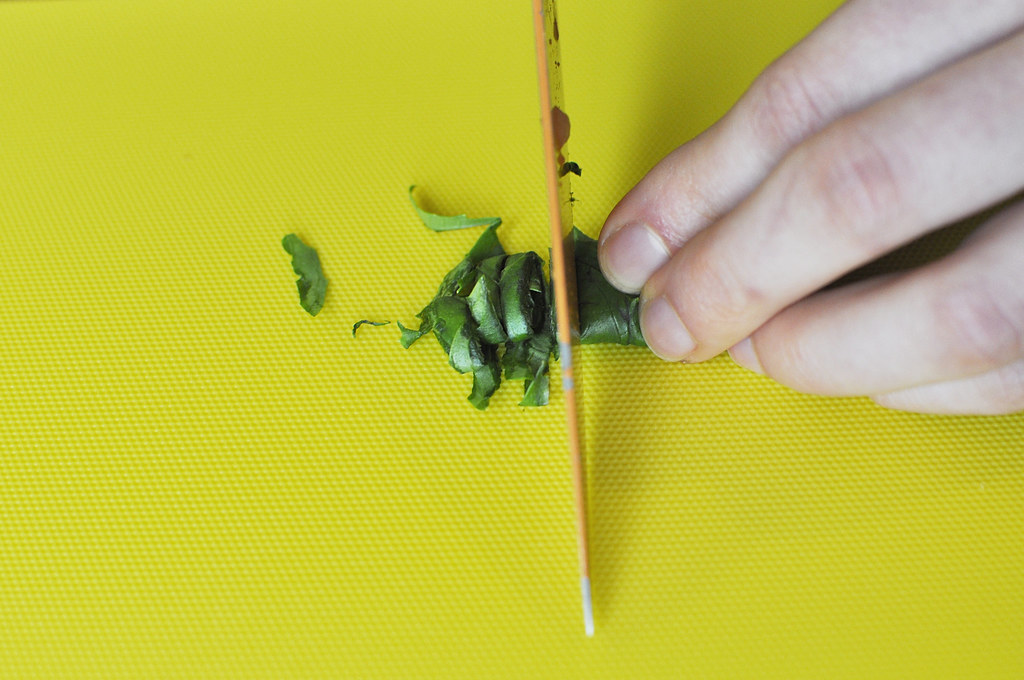When you read words like “chop,” “mince,” or “dice” in a recipe, do your eyes glaze over? Is your one knife technique hacking something into chunks? Have no fear. Once you know some basic knife jargon and a few helpful tricks, you’ll be ninja-chopping everything in sight.
Technique #1: Chop
Chop can mean different things depending on if it is fine, medium, or coarse. But if a recipe doesn’t call for a specific size it generally means to cut something into chunks of about 1/2-in. to 3/4-in. on all sides. As a rule of thumb, you should cut the food you are chopping into long, thick pieces and then cut each piece into smaller cubes. Below is an example of chopping an apple (please ignore my very bruised apple–produce isn’t always pretty).
Tip: hold each quarter together as you slice it into thirds so that you can rotate and chop them all at once.
Technique #2: Julienne
Julienne is just a fancy word for cutting food, commonly carrots or other root vegetables, into strips measuring about 1/8-in. x 1/8 in. x 2 1/2-in. It can be a little tricky but yields very pretty results–plus it just sounds fancy. To properly Julienne a carrot, you need to cut the carrot into pieces approximately 2-inches in length. Then keep cutting each piece length-wise until you have thin strips of carrots.
Tip: carrots can be difficult to cut since they tend to roll around, so try to create flat sides on which to cut.
Technique #3: Mince
Mincing essentially amounts to cutting things into little, tiny pieces. This method is usually used for things that distribute flavor throughout a dish, such as garlic (see below) or ginger. The first step to mincing is to peel off the skin. When you are peeling the papery skin off of garlic, crush it with the flat side of your knife until it flattens and the skin loosens. Then you want to take your knife and continually chop the garlic into smaller and smaller pieces.
Tip: the key to a good mince is resting one hand on top of the knife blade and rock it forward and backward from different directions (having a nice, sharp chef’s knife helps, too).
Technique #4: Dice
A dice can vary in size but if a recipe calls for just a regular dice, your pieces should be about 3/4-inch. cubes. Medium dice should be 1/2-inch. and small dice 1/4-inch. on all sides. To easily dice an onion, cut it in half and cut off the stem end, leaving the root end (with the furry bits) intact. Make vertical slices of your desired width from the root to the stem end angled toward the center of the onion–but don’t cut all the way through the root end. Then, hold onto the root end while you make cuts across the width of the onion to create the dice.
Technique #5: Chiffonade
Chiffonade is another fancy cooking term with a basic meaning. To chiffonade something, typically leafy foods like herbs or greens, you roll it up tightly and cut it into thin slices, which become long ribbons when unrolled. As an example, below I show how to chiffonade basil.
Tip: hold the roll tightly and slice cleanly to get even strips.
When it comes to knife skills and to cooking in general, remember that practice makes perfect. Also, if you were really committed to this article and happened to chop all of the things in it (yay for you!), make a quick vinaigrette with the garlic and onion and toss it all together with some greens and quinoa for a delicious salad.
References:


